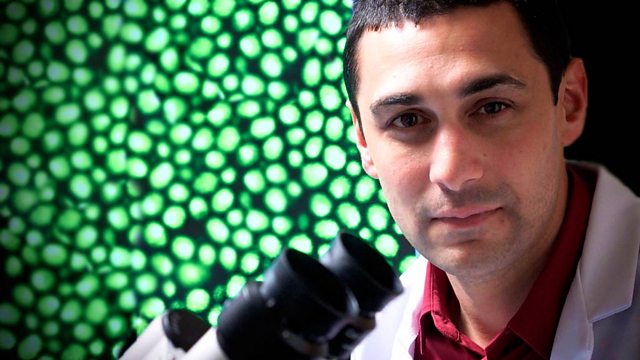Episode 2
Via gender-bending fish and James Bond's komodo dragons, Adam Rutherford explores the multitude of ways nature makes females and males.
Via gender-bending fish, the shrivelled Y chromosome and meeting James Bond's komodo dragon, Adam Rutherford explores the multifarious ways Nature uses to make females and males.
The biological Ying and Yang of the two sexes is a fundamental condition for sexual reproduction, and we have to thank sex for the evolution of the extraordinary variety of complex life on Earth (see episode 1 of this series). Without sex, the Earth would merely be a world of bacteria, oozing in microbial slime.
Given the importance of sex in the continuation of species and evolution, you might be forgiven for thinking that Nature produces males and females in a standardised and uncomplicated way in all creatures .
Far from it - as sex determination geneticist Jenny Graves explains to Adam Rutherford. Professor Graves has studied the molecular biology of sex in a multitude of zoological oddities such as the duck-billed platypus and the Australian dragon lizard, in a quest to understand the natural history of our own sex chromosomes, the X and Y.
Adam also enters the lair of a komodo dragon at London Zoo. A few years ago, the female dragon surprised everyone there with a virgin birth of a clutch of sons. She hadn't mated with a male and her unfertilised eggs developed into young males by a process called parthenogenesis (a kind of cloning).
A wild female Komodo dragon may have this asexual reproductive trick up her sleeve if she colonises a new Pacific island. Without sex, she lays some males and can then found a new population by having sex with them. This is possible because lizards have a quite different set of sex-determining chromosomes from mammals.
Adam also investigates what makes a boy or a girl in the tropical undersea world of 'Nemo' the clown fish. 'It's doesn't go exactly like the movie', warns Prof Bob Warner of the University of California, Santa Barbara, who goes on to describe and explain a sexually fluid scene of opportunistic gender transformation - Nemo to Nema, and Wilma to Willy the Wrasse - when changing sex will maximise the chance of producing offspring. Testes become ovaries or vice versa in a few days.
Jenny Graves and Adam conclude with a discussion of the degeneration of the male Y chromosome. Many researchers claim it's been shrinking during the millions of years of mammal evolution. At some point, it will shrivel to nothing. Jenny gives the human Y chromosome 5 million years at most - but it could disappear much sooner. What will this mean for men and the continuation of the human species?
Producer: Andrew Luck-Baker.
Last on
More episodes
Previous
Next
You are at the last episode
See all episodes from Sexual Nature: A Brief Natural History of Sex
Adam Rutherford, Ian Stephen and Raja the komodo dragon at the Zoological Society of London

Broadcast
- Wed 23 Jan 2013 21:00大象传媒 Radio 4

